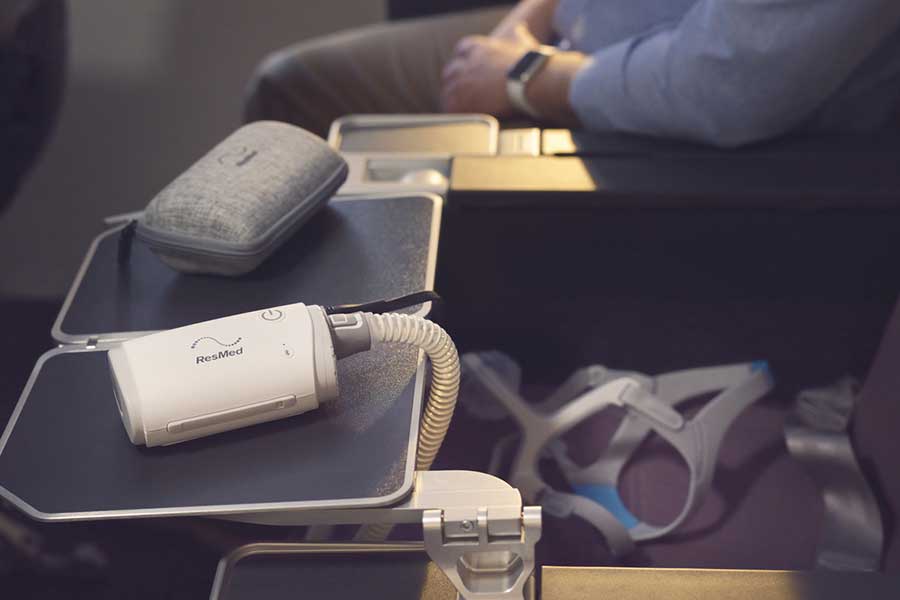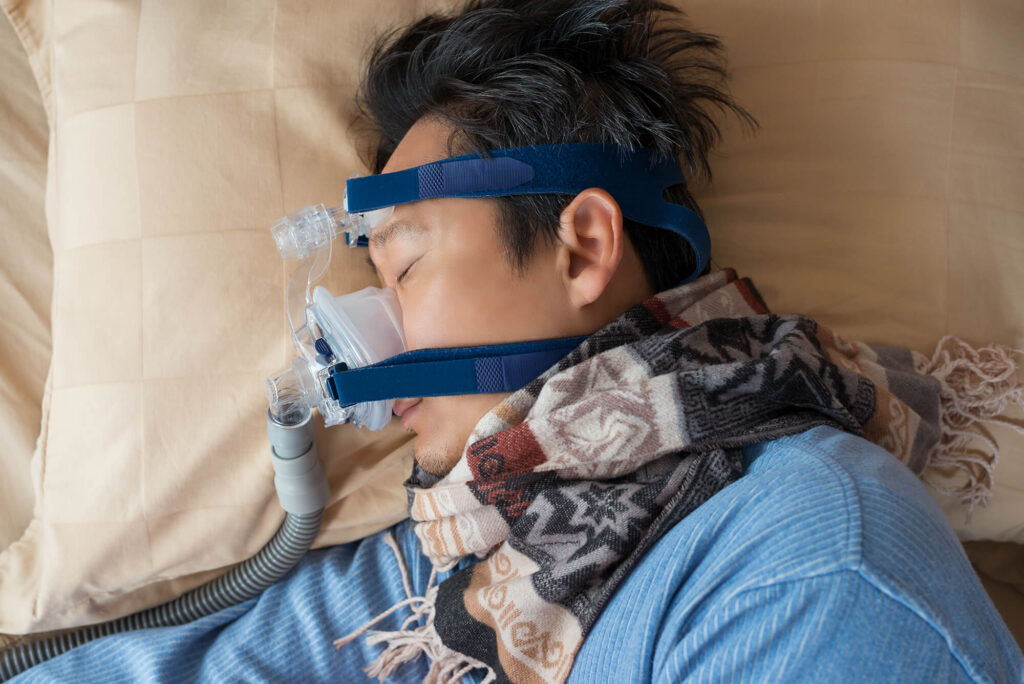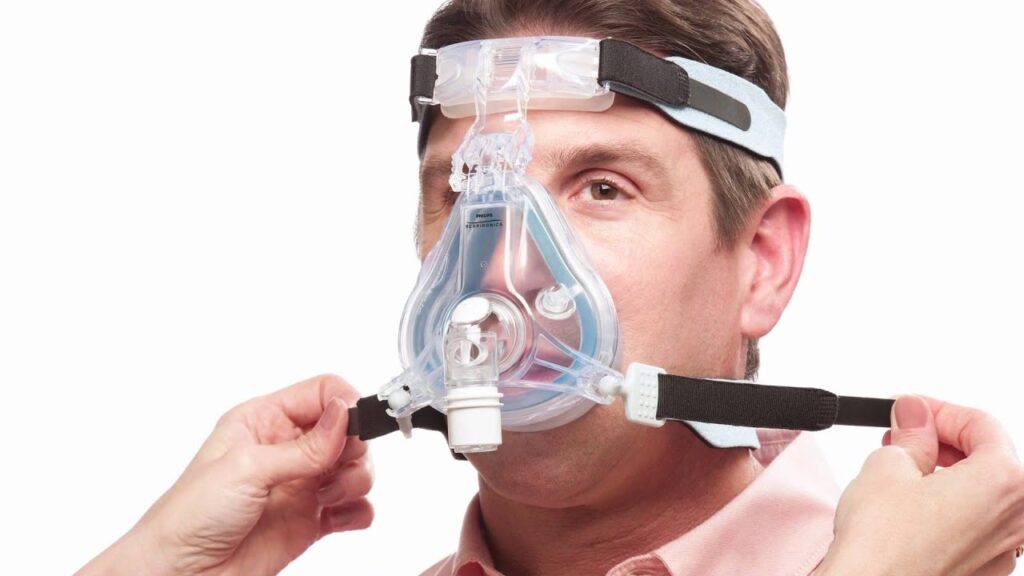You may need some time before you feel at ease utilizing CPAP treatment. Use the following advice to increase your CPAP sleep quality:
Start using your CPAP for brief durations during the day as you read or watch TV.
You may become acclimated to wearing your mask thanks to this. Trying to fall asleep will make it seem more natural.
Include using CPAP in your sleep regimen.
Use CPAP throughout each nap and every night. Less frequent use of cpap machines its health advantages and makes it more difficult for your body to adapt to the sleep apnea treatment.
Adjust the situation somewhat to make you more comfortable. Once you have the proper fit, adjust your mask straps and headpiece. You may also give a specific cushion designed to fit a CPAP mask and tube a try. Learn more if you’re looking to travel with your CPAP machine.
Ensure that your mask fits you well.
When the mask does not fit correctly, CPAP issues are most often seen. The straps securing the mask to your face will need to be tightened firmly if it is too large. As the straps brush across your face, this might irritate your skin or cause blisters. To prevent the CPAP straps from chafing on your skin, you may purchase soft strap coverings. If a mask is too tiny, air will escape through the edges and the seal won’t be as tight. Your eyes may be blown out by the wind. You may need a new mask or headgear if you are experiencing one of these issues.
Use the “ramp” setting on your CPAP machine if the pressure seems excessive while you attempt to sleep.
The ramp option will first set your device’s pressure low and progressively raise it over time. You ought to be able to doze off before the air pressure reaches the desired setting.
Nasal congestion may be a concern with CPAP therapy; to relieve minor nasal congestion, use a saline nasal spray. With nasal or sinus congestion, a nasal spray might be helpful.
If you have a dry mouth, throat, or nose, use a humidifier.
A heated humidifier is a common feature of CPAP machines. It guarantees that the air you breathe via your mask is warm and humid.
Have a regular cleaning time for your equipment.
Once each week, wash your mask, tubing, and headpiece. Schedule this time so that you don’t forget to do it.

Tips on travelling with your CPAP machine
How can I travel with my CPAP machine is one of the concerns we get asked at The Alaska Sleep Clinic the most. Quite a number of our residents have “slope” professions that need them to be away from home for extended periods of time in between R&R breaks, and many of our patients routinely go to the “lower 48” for vacations and to see family.
Living with sleep apnea may be challenging enough without all the additional inconveniences of travel. Many patients find it difficult (at least initially) to use a CPAP machine every night at home, much alone the thought of carrying it about when they travel.
However, you shouldn’t allow the thought of taking your computer with you make you unhappy. Furthermore, even for brief travels, you should never leave your computer at home. Unbeknownst to many, taking a CPAP machine on the road is considerably simpler than previously believed.
Here are some useful pointers for taking a CPAP machine on the road.
Make a Trip Plan in Advance
No, traveling with your CPAP machine doesn’t need weeks of additional preparation, but you should make sure you’ve done a few key things before leaving. Making your trip reservations in advance will make them smoother and more pleasurable.
If you’d like, you may carry your CPAP in your checked baggage, although many CPAP users prefer to bring their devices with them when they travel. CPAP machines are not considered carry-on goods since they are medical equipment recognized by the Americans with Disabilities Act.
In case your baggage is misplaced, it’s a good idea to have your CPAP machine with you on the flight.
The majority of more recent machines are compact, lightweight, and often have a carrying bag, so traveling with them shouldn’t be difficult. However, there are CPAP devices designed specifically for travel that are even more practical and portable. If you travel often, it would be worthwhile to spend the money on a second, travel-focused machine.

- Make sure you have all the necessary plugs and adaptors for your destination. Since virtually all modern devices have universal power supply that can adjust to different voltages, traveling internationally shouldn’t be an issue.
- A backup battery pack could be something you want to think about getting or renting. These are excellent if you want to go camping or just as a safety measure against power shortages.
- Pack additional materials (especially cushions). Your mask cushions might malfunction at any time.
- To avoid spills and possible machine damage, ensure sure the humidifier chamber is empty and dry before packing your CPAP machine.
- Confirm that your seat on the airline has power outlets if you’re travelling overnight or want to sleep while you’re in the air while using your CPAP.
- Keep your prescription close at hand in case you experience equipment failure or run out of supplies while away from home. Request supplier suggestions from your current CPAP provider for the region you want to visit.
What to anticipate at the terminal and on the aircraft
- It is advised to attach a medical equipment baggage tag to your CPAP case. However, the majority of TSA employees are well-versed in CPAP machines and can quickly identify them as medical devices.
- An x-ray of your CPAP will be required. Take the machine out of the travel case and put it in a separate screening bin to speed up the procedure. The carry case may be used to store the remaining equipment. To check for explosive residue, an agent may need to swab your CPAP machine. If so, you might request that the agent use a clean set of gloves and an unopened swab.
- If hygiene is a concern, put the CPAP machine in a transparent plastic bag before throwing it away.
- In case TSA officials want extra verification for your equipment, it could be a good idea to have your prescription with you.
- Make sure you have the required adapters or a backup battery pack if you want to use your device on the journey.
- In the restroom at the airport or on the aircraft, use bottled water to fill your humidifier rather than tap water.
You may always get a CPAP travel sweatshirt to be more discrete if you feel a little awkward using your equipment on the airline.

